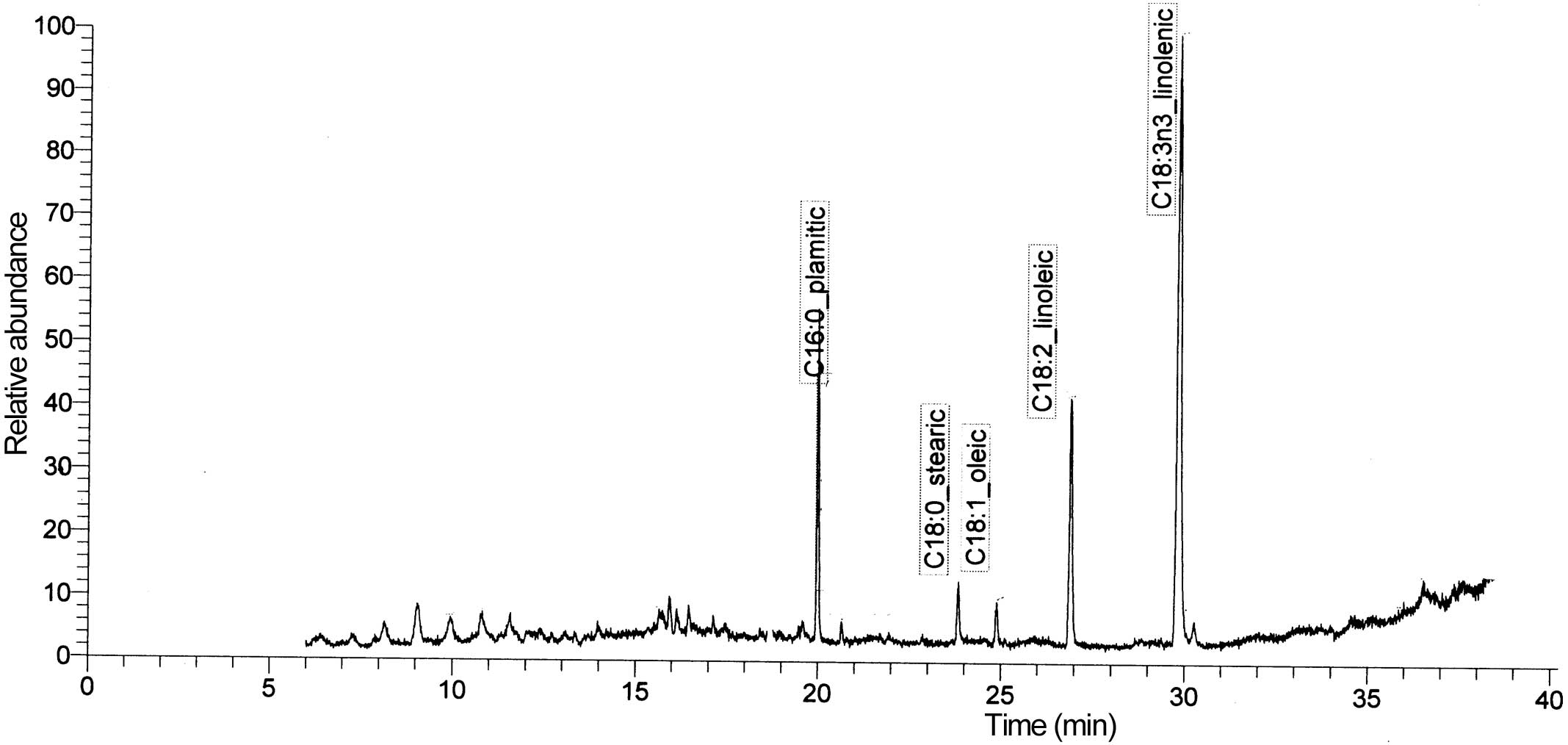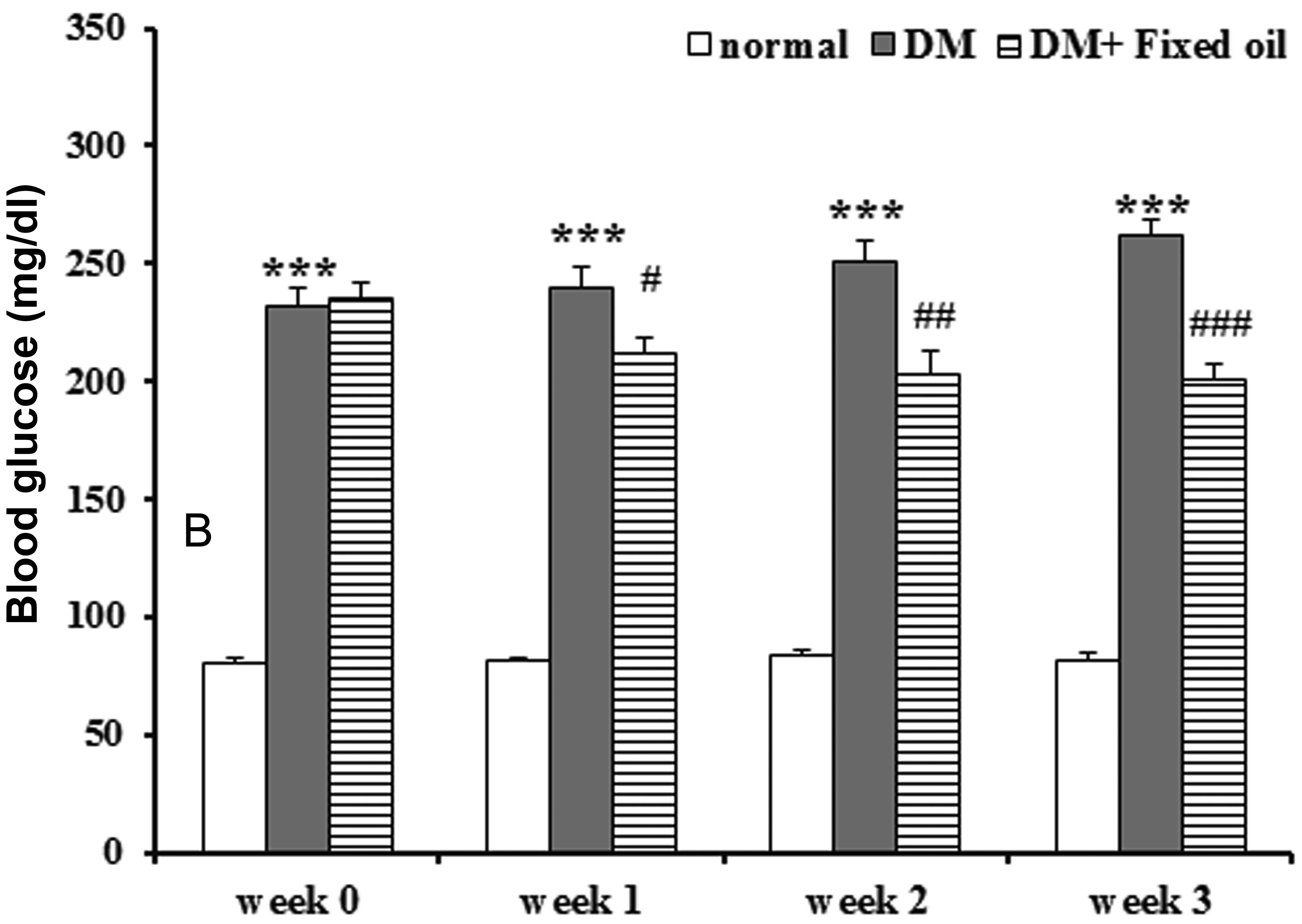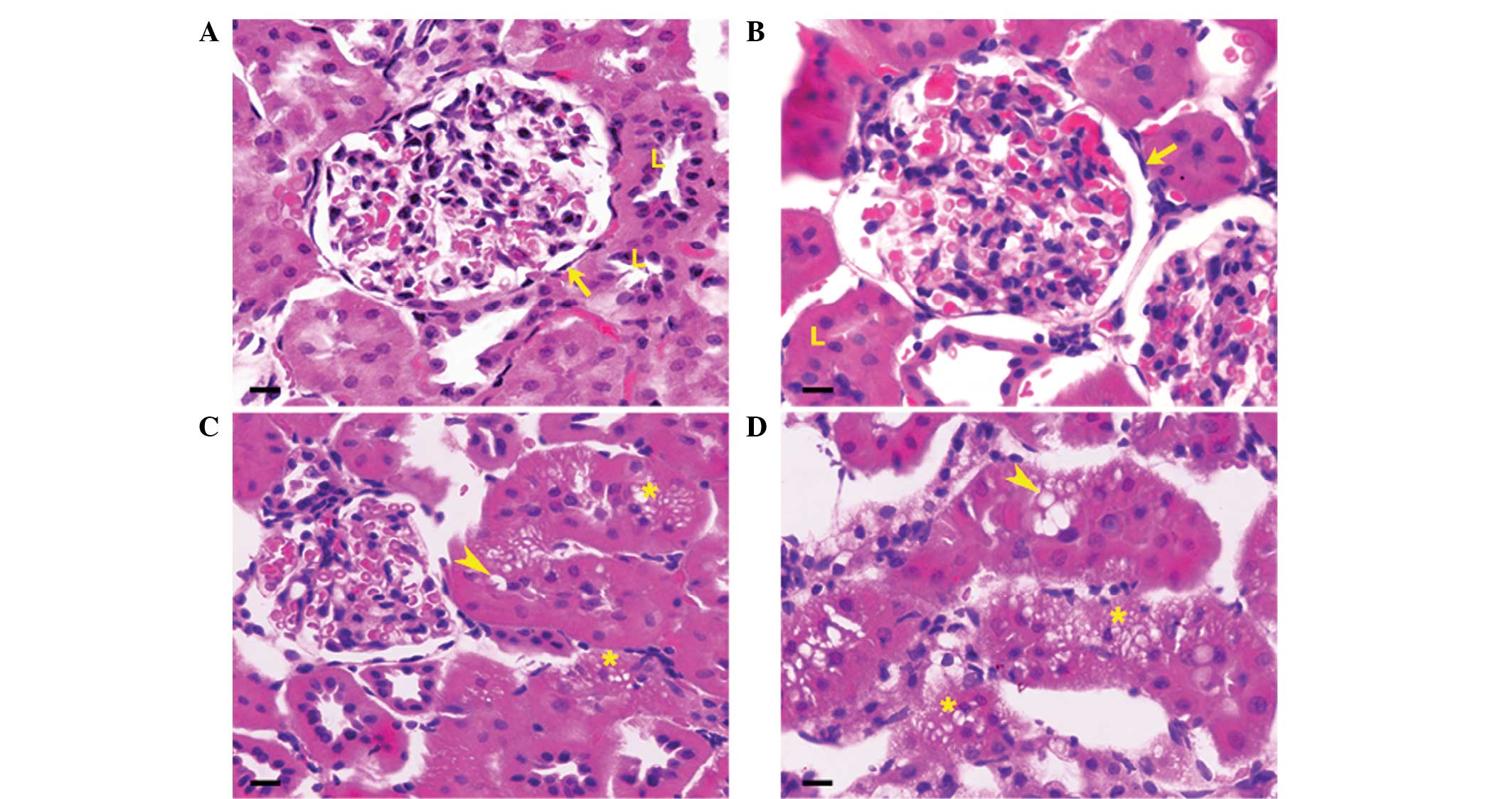|
1
|
American Diabetes Association: Diagnosis
and classification of diabetes mellitus. Diabetes Care. 33(Suppl
1): 62–69. 2010.
|
|
2
|
Rochette L, Zeller M, Cottin Y and Vergely
C: Diabetes, oxidative stress and therapeutic strategies. Biochim
Biophys Acta. 1840:2709–2729. 2014. View Article : Google Scholar : PubMed/NCBI
|
|
3
|
Wild S, Roglic G, Green A, Sicree R and
King H: Global prevalence of diabetes: estimates for the year 2000
and projections for 2030. Diabetes Care. 27:1047–1053. 2004.
View Article : Google Scholar : PubMed/NCBI
|
|
4
|
World Health Organization: The top 10
causes of death. Fact sheet No 310. http://www.who.int/mediacentre/factsheets/fs310/en/Accessed.
May. 2014
|
|
5
|
Emilien G, Maloteaux JM and Ponchon M:
Pharmacological management of diabetes: Recent progress and future
perspective in daily drug treatment. Pharmacol Ther. 81:37–51.
1999. View Article : Google Scholar : PubMed/NCBI
|
|
6
|
Suanarunsawat T, Ayutthaya WD, Songsak T,
Thirawarapan S and Poungshompoo S: Lipid-lowering and antioxidative
activities of aqueous extracts of Ocimum sanctum L. leaves
in rats fed with a high-cholesterol diet. Oxid Med Cell Longev.
2011:9620252011. View Article : Google Scholar : PubMed/NCBI
|
|
7
|
Taleb-Senouci D, Ghomari H, Krouf D,
Bouderbala S, Prost J, Lacaille-Dubois MA and Bouchenak M:
Antioxidant effect of Ajuga iva aqueous extract in
streptozotocin-induced diabetic rats. Phytomedicine. 16:623–631.
2009. View Article : Google Scholar : PubMed/NCBI
|
|
8
|
Sarkhail P, Rahmanipour S, Fadyevatan S,
Mohammadirad A, Dehghan G, Amin G, Shafiee A and Abdollahi M:
Antidiabetic effect of Phlomis anisodonta: Effects on
hepatic cells lipid peroxidation and antioxidant enzymes in
experimental diabetes. Pharmacol Res. 56:261–266. 2007. View Article : Google Scholar : PubMed/NCBI
|
|
9
|
Pattanayak P, Behera P, Das D and Panda
SK: Ocimum sanctum Linn. A reservoir plant for therapeutic
applications: An overview. Pharmacogn Rev. 4:95–105. 2010.
View Article : Google Scholar : PubMed/NCBI
|
|
10
|
Cohen MM: Tulsi - Ocimum sanctum: A
herb for all reasons. J Ayurveda Integr Med. 5:251–259. 2014.
View Article : Google Scholar : PubMed/NCBI
|
|
11
|
Chandrasekaran CV, Srikanth HS, Anand MS,
Allan JJ, Viji MM and Amit A: Evaluation of the mutagenic potential
and acute oral toxicity of standardized extract of Ocimum
sanctum (OciBest™). Hum Exp Toxicol. 32:992–1004. 2013.
View Article : Google Scholar : PubMed/NCBI
|
|
12
|
Gautam MK and Goel RK: Toxicological study
of Ocimum sanctum linn leaves: Hematological, biochemical
and histopathological studies. J Toxicol.
2014:1356542014.PubMed/NCBI
|
|
13
|
Mahajan N, Rawal S, Verma M, Poddar M and
Alok S: A phytopharmacological overview on Ocimum species
with special emphasis on Ocimum sanctum. Biomed Prevent
Nutr. 3:185–192. 2013. View Article : Google Scholar
|
|
14
|
Suanarunsawat T and Songsak T:
Anti-hyperglycemic and anti-hyperlipidemic effect of dietary
supplement of white Ocimum sanctum L. before and after
STZ-induced diabetes mellitus. Inter J Diabetes Metab. 13:18–23.
2005.
|
|
15
|
Narendhirakannan RT, Subramanian S and
Kandaswamy M: Biochemical evaluation of antidiabetogenic properties
of some commonly used Indian plants on streptozotocin-induced
diabetes in experimental rats. Clin Exp Pharmacol Physiol.
33:1150–1157. 2006. View Article : Google Scholar : PubMed/NCBI
|
|
16
|
Suanarunsawat T, Ayutthaya WD,
Thirawarapan S and Poungshompoo S: Anti-oxidative,
anti-hyperglycemic and lipid-lowering effects of aqueous extracts
of Ocimum sanctum L. leaves in diabetic rats. Food Nutr Sci.
5:801–811. 2014. View Article : Google Scholar
|
|
17
|
Reddy SS, Karuna R, Baskar R and
Saralakumari D: Prevention of insulin resistance by ingesting
aqueous extract of Ocimum sanctum to fructose-fed rats. Horm
Metab Res. 40:44–49. 2008. View Article : Google Scholar : PubMed/NCBI
|
|
18
|
Shetty S, Udupa S and Udupa L: Evaluation
of antioxidant and wound healing effects of alcoholic and aqueous
extract of Ocimum sanctum linn in rats. Evid Based
Complement Alternat Med. 5:95–101. 2008. View Article : Google Scholar : PubMed/NCBI
|
|
19
|
Bhattacharyya P and Bishayee A: Ocimum
sanctum Linn. (Tulsi): An ethnomedicinal plant for the
prevention and treatment of cancer. Anticancer Drugs. 24:659–666.
2013. View Article : Google Scholar : PubMed/NCBI
|
|
20
|
Banu Sharmila G, Kumar G and Murugesan AG:
Effects of leaves extract of Ocimum sanctum L. on
arsenic-induced toxicity in Wistar albino rats. Food Chem Toxicol.
47:490–495. 2009. View Article : Google Scholar : PubMed/NCBI
|
|
21
|
Ramesh B and Satakopan VN: Antioxidant
activities of hydroalcoholic extract of Ocimum sanctum
against cadmium induced toxicity in rats. Indian J Clin Biochem.
25:307–310. 2010. View Article : Google Scholar : PubMed/NCBI
|
|
22
|
Hussain EH, Jamil K and Rao M:
Hypoglycaemic, hypolipidemic and antioxidant properties of tulsi
(Ocimum sanctum linn) on streptozotocin induced diabetes in
rats. Indian J Clin Biochem. 16:190–194. 2001. View Article : Google Scholar : PubMed/NCBI
|
|
23
|
Suanarunsawat T, Na Devakul Ayutthaya W,
Songsak T, Thirawarapan S and Poungshompo S: Antioxidant activity
and lipid-lowering effect of essential oils extracted from
Ocimum sanctum L. leaves in rats fed with a high cholesterol
diet. J Clin Biochem Nutr. 46:52–59. 2010. View Article : Google Scholar : PubMed/NCBI
|
|
24
|
Suanarunsawat T, Boonnak T, Ayutthaya Na
WD and Thirawarapan S: Anti-hyperlipidemic and cardioprotective
effects of Ocimum sanctum L. fixed oil in rats fed a high
fat diet. J Basic Clin Physiol Pharmacol. 21:387–400. 2010.
View Article : Google Scholar : PubMed/NCBI
|
|
25
|
Su J, Zhang P, Zhang JJ, Qi XM, Wu YG and
Shen JJ: Effects of total glucosides of paeony on oxidative stress
in the kidney from diabetic rats. Phytomedicine. 17:254–260. 2010.
View Article : Google Scholar : PubMed/NCBI
|
|
26
|
Li CJ, Lv L, Li H and Yu DM: Cardiac
fibrosis and dysfunction in experimental diabetic cardiomyopathy
are ameliorated by alpha-lipoic acid. Cardiovasc Diabetol.
11:732012. View Article : Google Scholar : PubMed/NCBI
|
|
27
|
Mercer BN, Morais S, Cubbon RM and Kearney
MT: Diabetes mellitus and the heart. Int J Clin Prac. 66:640–647.
2012. View Article : Google Scholar
|
|
28
|
AOAC International: Method 948.22.
Official Methods of Analysis of AOAC International (16th).
(Washington, DC). Association of Analytical Communities. 1995.
|
|
29
|
International Organization for
Standardization (ISO): Animal and vegetable fats and oils:
Preparation of methyl esters of fatty acids (Method ISO 5509). ISO
(Geneva). 1–6. 1978.
|
|
30
|
Ohkawa H, Ohishi N and Yagi K: Assay for
lipid peroxides in animal tissues by thiobarbituric acid reaction.
Anal Biochem. 95:351–358. 1979. View Article : Google Scholar : PubMed/NCBI
|
|
31
|
Lowry OH, Rosebrough NJ, Farr AL and
Randall RJ: Protein measurement with the Folin phenol reagent. J
Biol Chem. 193:265–275. 1951.PubMed/NCBI
|
|
32
|
Tapple AL: Glutathione peroxidase and
hydroperoxidase methods. Methods in Enzymology. 2:Sidney F and
Lester P: (New York, NY). Academic Press. 506–513. 1978. View Article : Google Scholar
|
|
33
|
Luck H: Catalase. Method for Enzymatic
Analysis. 3:Bergmeyer HU: (New York and London). Academic Press.
885–894. 1965. View Article : Google Scholar
|
|
34
|
Winterbourn CC, Hawkins RE, Brian M and
Carrell RW: The estimation of red cell superoxide dismutase
activity. J Lab Clin Med. 85:337–341. 1975.PubMed/NCBI
|
|
35
|
Hewitson TD, Wigg B and Becker GJ: Tissue
preparation for histology: Fixation, embedding, and antigen
retrieval for light microscopy. Methods Mol Biol. 611:3–18. 2010.
View Article : Google Scholar : PubMed/NCBI
|
|
36
|
Reichard P and Pihl M: Mortality and
treatment side-effects during long-term intensified conventional
insulin treatment in the Stockholm Diabetes Intervention Study.
Diabetes. 43:313–317. 1994. View Article : Google Scholar : PubMed/NCBI
|
|
37
|
Elsner M, Guldbakke B, Tiedge M, Munday R
and Lenzen S: Relative importance of transport and alkylation for
pancreatic beta-cell toxicity of streptozotocin. Diabetologia.
43:1528–1533. 2000. View Article : Google Scholar : PubMed/NCBI
|
|
38
|
Moran BM, Abdel-Wahab YH, Flatt PR and
McKillop AM: Evaluation of the insulin-releasing and
glucose-lowering effects of GPR120 activation in pancreatic
β-cells. Diabetes Obes Metab. 16:1128–1139. 2014. View Article : Google Scholar : PubMed/NCBI
|
|
39
|
Khamaisi M, Rudich A, Beeri I, Pessler D,
Friger M, Gavrilov V, Tritschler H and Bashan N: Metabolic effects
of gamma-linolenic acid-alpha lipoic acid conjugate in
streptozotocin diabetic rats. Antioxid Redox Signal. 1:523–535.
1999. View Article : Google Scholar : PubMed/NCBI
|
|
40
|
Halliwell B and Chirico S: Lipid
peroxidation: Its mechanism, measurement and significance. Am J
Clin Nutr. 57(5 Suppl): 715S–725S. 1993.PubMed/NCBI
|
|
41
|
Rochette L, Zeller M, Cottin Y and Vergely
C: Diabetes, oxidative stress and therapeutic strategies. Biochim
Biophys Acta. 1840:2709–2729. 2014. View Article : Google Scholar : PubMed/NCBI
|
|
42
|
King GL and Loeken MR:
Hyperglycemia-induced oxidative stress in diabetic complications.
Histochem Cell Biol. 122:333–338. 2004. View Article : Google Scholar : PubMed/NCBI
|
|
43
|
Kumar S, Prasad S and Sitasawad SL:
Multiple antioxidants improve cardiac complications and inhibit
cardiac cell death in streptozotocin-induced diabetic rats. PLoS
One. 8:e670092013. View Article : Google Scholar : PubMed/NCBI
|
|
44
|
Zobali F, Avci A, Canbolat O and Karasu C:
Effects of vitamin A and insulin on the anti-oxidative state of
diabetic rat heart: A comparison study with combination treatment.
Cell Biochem Funct. 20:75–80. 2002. View Article : Google Scholar : PubMed/NCBI
|
|
45
|
Suanarunsawat T, Ayutthaya WD, Songsak T
and Rattanamahaphoom J: Anti-lipidemic actions of essential oil
extracted from Ocimum sanctum L. leaves in rats fed with
high cholesterol diet. J Appl Biomed. 7:45–53. 2009.
|
|
46
|
Barcelli UO, Weiss M, Beach D, Motz A and
Thompson B: High linoleic acid diets ameliorate diabetic
nephropathy in rats. Am J Kidney Dis. 16:244–251. 1990. View Article : Google Scholar : PubMed/NCBI
|
|
47
|
Jiang M, Zheng J, Yu W, Lv G, Xu Q, Zhou Y
and Zhai C: Protective effect of ALA on high glucose induced
cellular injury of LLC-PK1 cell. Wei Sheng Yan Jiu. 41:191–194.
2012.(In Chinese). PubMed/NCBI
|


















